Lessons Learned
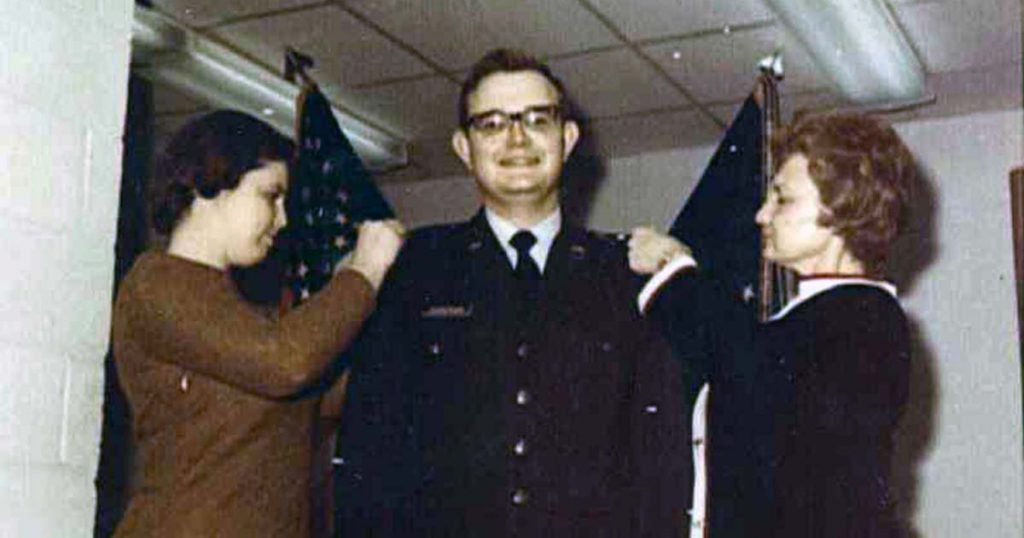
UT Alumnus Hickerson Served Nation Through Period of Change, Challenge
There are events that define generations, the days when things happen that transcend the news and become “where were you when” moments in time. While most experience such instances via television or online, there are always those with front-row seats to history.
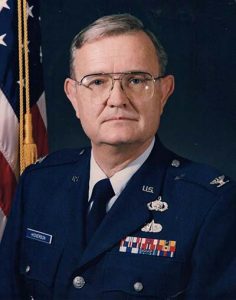
Across his distinguished, 40-plus year career, now-retired US Air Force (USAF) Colonel Thomas Hickerson, a 1970 University of Tennessee electrical engineering graduate, had a number of tough days. Ones where he wasn’t just a witness to events but an active participant.
Images from two of those events are forever etched in history: the September 11 attacks and the Space Shuttle Challenger disaster.
The 60th anniversary of the groundbreaking of the Pentagon’s 1941 construction dawned like any other day for those who worked there. By day’s end, Hickerson would recall flames.
Smoke filled the sky, water was being sprayed everywhere, and once-peaceful open spaces that typically served as spots to grab fresh air had been transformed into a makeshift medical center and morgue.
“When we returned to work in the afternoon, we went in through a lower corridor entrance near the side in flames, and as we entered the building, the corridors were empty and closed, while our footsteps echoed on the hard floors,” Hickerson said. “The smell was that of burned insulation, of transformers that overheated. I had smelled it before, but not like this. I will never forget it.”
Hickerson was a program manager for Lockheed Martin in charge of maintaining the performance and security of the critical networking and communications operations at the Pentagon following a lengthy Air Force career. As part of that task, he had built up a staff of 250 contractors since starting in February of that year.
That Tuesday began with the usual morning meetings and operational briefs, but that all changed when the wife of one of his team members called to report that a plane had hit the North Tower of the World Trade Center.
Remarkably, Hickerson and other workers like him at the Pentagon got their first vital information that day by watching events unfold on live television, not knowing that their building would soon be a target.
In fact, due to its remarkable construction, Hickerson and his staff didn’t even know that they were a target after the building had been hit.
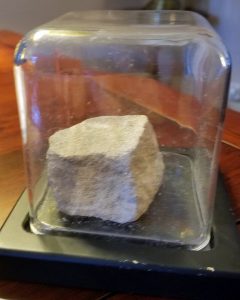
“About 10 that morning, people came into the office area to tell us that the Pentagon had been hit and that the military said to evacuate the building,” he said. “At that time, I didn’t hear anything, I didn’t see anything. They built the Pentagon in five massive sections during World War II, so the impact didn’t even register movement or noise in our basement level on the opposite side of the building.”
Hickerson and his team followed orders to evacuate, but his sense of duty and the importance of his task in keeping networks and communications running led him to return to the job later that day. They were able to have the network up and running in short order, aside from sections that were destroyed in the blast and resulting fires.
He says that even though he had already had a long and distinguished career before that day, his team’s response still taught him some new lessons, harkening back to the lesson from his professors at UT that learning was a continual process, not a finite exercise.
“The small decisions matter, as well,” said Hickerson. “One of my last thoughts before leaving the building that morning was to grab the contact information of all 250 of my team members so that I could check on them. These were men and women who stood up and risked personal danger to do the right thing, even following me back into the burning building for the sake of the nation.”
Having a team that trusts and has belief in each other to do what is right, being decisive and concise when planning an immediate response and establishing a longer plan, and checking in on the health—both mental and physical—of each other are all things that served Hickerson and his team well in those dark days.
From Shelby County to the Smokies
A history of commitment to duty and a continued eagerness to learn about and to adapt to changes in technology are hallmarks of Hickerson’s career.
They’re also things Hickson credits to his engineering education at UT, which began with his decision to attend the university following his graduation from Nicholas Blackwell Bartlett High School in 1965.
“There was never a question as to where I would go to college once I came to Knoxville and saw UT,” said Hickerson, who now lives in Smyrna. “What really stands out to me even now was the attitude of the faculty is their respect for continued learning. They made it clear that a bachelor’s degree was a starting point, door opener, and strong credential for the future, and they stressed the need for further growth and development, something that served me well in my career.”
Having shown a knack for science and related fields, and thanks to encouragement from his parents and uncle, Hickerson enrolled in engineering at UT. He said that he felt that the faculty, from the outset, showed interest in helping students grow and with concern for their general wellbeing.
Hickerson recalls many aspects of engineering education that probably still hold true for current students, such as “seemingly never-ending” work in calculus, conducting surveys of the Hill, and learning things from other disciplines that helped in his core work, although he notes that they did all of their calculations with slide rulers and graph paper.
He credits UT for making sure its engineering students were well-versed in courses outside of the college, even if he and his classmates didn’t necessarily enjoy it at the time.
“We had to be more educationally rounded than some of the pure engineers would have preferred,” he said. “It wasn’t all circuits and calculus, but classes across campus. I had one assignment where the instructor said I should have had a lower grade because my handwriting was so bad, but that the paper itself was so well done that I’d gotten an ‘A.’ You don’t know it at the time, but learning those skills was to prove vital during my career.”
Hickerson had plenty of other good memories of his time at UT—he met his wife, Elizabeth, there, their children are both alumni, and they have one grandchild now at the university with a second potentially starting next year—but his nation came calling.
A Time to Serve
Hickerson’s time at UT coincided with an era in which all male students were required to take part in the Reserve Officers’ Training Corps program, more commonly called ROTC.
It also came during the height of the US involvement in the Vietnam War, presenting a career opportunity for those wanting to take it.
Doing so was a minimum four-year commitment to the USAF; Hickerson would stay committed for 30.
“My first job was to develop the morning brief for the commander on installation jobs, and there were several warrant officers working for me,” he said. “These were older men with gray hair, so my southern upbringing taught me to call them ‘Sir,’ even though I outranked them. One of the warrant officers pulled me aside and said ‘Sir, you are the Sir, Sir,’ and my education continued.”
Following a Master’s degree at Purdue, his next assignment was to develop the largest communications project ever undertaken by the US in Pacific Theater, including anything undertaken during the Vietnam War, the Hardened Tactical Air Control Center in South Korea.
Continuing a theme that began at UT, Hickerson never stopped building his career or his education, moving steadily up the command chain and taking on ever-bigger projects, both in scope and importance.
By 1986, Hickerson was in a role in satellite command, helping conduct the vital task of relaying data that is crucial to keeping them in orbit from the ground to space.
For several years, satellites in need of repair or adjustment could be brought about the space shuttle for maintenance, or it could take replacements aloft as needed.
That changed on January 26 of that year, when the Space Shuttle Challenger broke apart just 73 seconds after launch. NASA grounded the space shuttle fleet for 28 months following the incident to conduct a full investigation.
What didn’t stop with the Challenger’s loss, however, was the nation’s continued reliance on satellites.
“We realized that our mission became even more vital,” said Hickerson. “Every satellite had to stay in orbit for its full potential life and beyond. Maintenance downtime could not be allowed and failure of the systems just could not happen. In the ensuing months we maintained 100 percent performance. The hundreds of members of the squadron all increased their dedication.”
One of those roles was an assignment as a squadron commander in charge of satellite control from a base in California, while others kept him on the forefront of information technology.
On the Air Staff in the Pentagon, he had the chance to lead development of networks and computers as the IT Architect, later called the Chief Technical Officer, by developing the standards for all aspects of computing from hardware, software, data, security, network standards, etc., and oversight of contracts to purchase desktop computers for all the services.
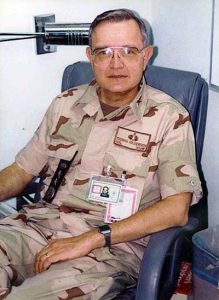
By the early 1990s, Hickerson was senior communicator for Joint Task Force South West Asia, the allied coalition that monitored and patrolled airspace over southern Iraq from 1992-2003. That job came with its own set of challenges.
“It was our job to keep the multinational communications efforts coordinated and running,” he said. “Then there was the challenge of having stretches of downtime and normalcy that were mixed with tension and intense decision-making moments as aircraft approached the no-fly zone.”
Running a military operation in a former, future, and, at the time, “possible-at-any-moment” war zone might be the biggest test some people face in their careers. For Hickerson, it was just one of many challenges that he called upon his education and training to rise to the occasion.
Career Recognition
Hickerson’s career in communications came in a time when sharing information was revolutionized in a way more rapidly, more technologically, and more widespread than ever before.
When he was first honing his skills at UT, computing was still done via stacks of punch cards, and commercial satellites had only recently been able to broadcast events from one side of the world to the other.
By the time he retired from the field in 2008 after a six-and-a-half year post as the State of Tennessee’s Executive Director Operations and Infrastructure, mobile devices were capable of delivering communications, information, and data in ways that were science fiction decades earlier.
In recognition of those roles, he has been honored nationally and in Tennessee. The state honored him with recognition as an Aide de Camp with the title, “Honorable,” and, more recently, he was selected by the Air Force Cyber Security Hall of Fame as a 2021 honoree. He is the first Tennessean to receive such high professional recognition for engineering efforts.
“To be inducted is an exciting and humbling experience,” said Hickerson. “Lockheed Martin recognized me with their highest award, the Nova, for leadership in a ceremony at the Smithsonian Air and Space Museum. The Air Force honored me with the Falcon Award at retirement. The Sons of the American Revolution presented me the Hero Medal for my actions on September 11. Yet, all of those honors pale in comparison to this recognition.”
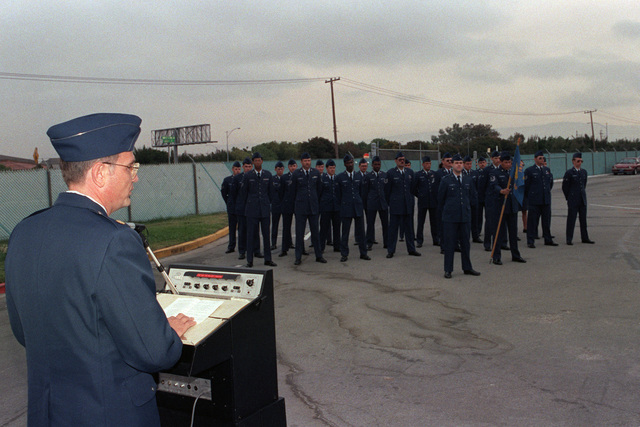
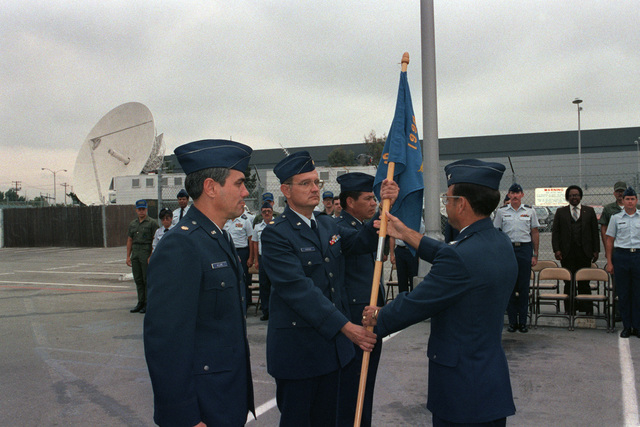
Through it all, Hickerson maintained his place on the cutting edge of communications by continuing to uphold the lessons he learned at UT all those years ago: Never stop learning.